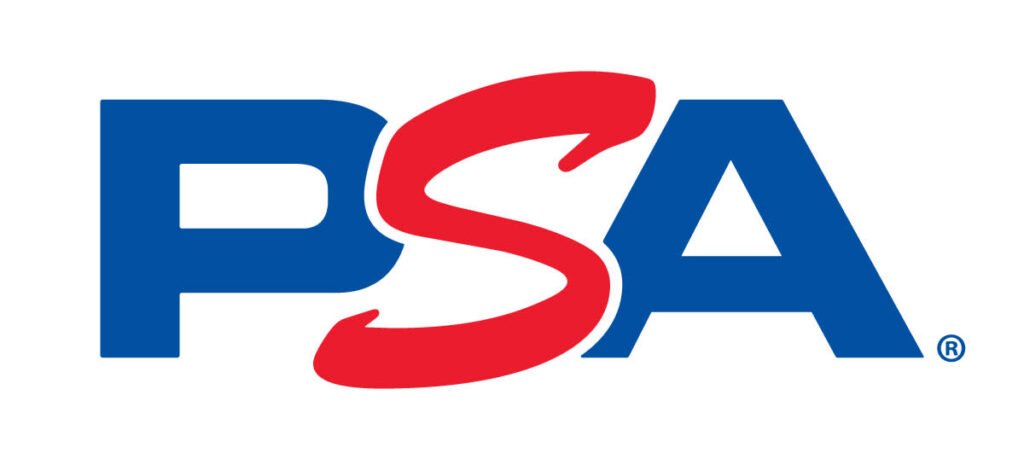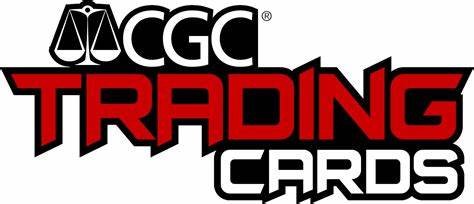Are you a passionate collector of trading cards and interested in learning more about card grading? Look no further! This article serves as your ultimate guide to understanding the ins and outs of card grading. We will address commonly asked questions, demystify the grading process, and provide you with valuable insights on how to assess the condition and value of your beloved cards. Whether you’re a seasoned collector or just starting out, this article is packed with valuable information to enhance your collecting journey. So, grab your favorite cards, and let’s dive into the world of card grading!
What is card grading?
Definition of card grading
Card grading is a process that involves evaluating the condition and authenticity of collectible trading cards. It aims to provide collectors and enthusiasts with a standardized and objective assessment of a card’s quality, which can then be used to determine its value in the marketplace.
Purpose of card grading
The purpose of card grading is to provide transparency and credibility to the trading card market. By assigning a grade to a card, it gives potential buyers and sellers an easy way to assess the condition and worth of a card without relying solely on personal opinions or subjective judgments.
Who grades the cards?




Grading companies
Card grading is typically performed by independent certification companies that specialize in assessing the condition and authenticity of trading cards. These companies employ a team of professional graders who have extensive knowledge and experience in evaluating cards from various eras and manufacturers.
PSA (Professional Sports Authenticator)
Professional Sports Authenticator (PSA) is the largest and most trusted third-party trading card authentication and grading company in the world. Established in 1991, PSA has certified over 40 million cards and collectibles with a cumulative declared value of over a billion dollars. As a division of Collectors Universe, PSA has offices in various locations including California, New Jersey, Paris, Hong Kong, Shanghai, and Tokyo. They offer a guarantee on their services, making them a clear leader in authentication and grading for trading cards and other collectibles. For those interested in submitting cards for grading, you can start the process on their website.
BGS (Beckett Grading Services)
Beckett Grading Services (BGS) is renowned for its accurate and consistent grading in the collectibles industry. For six consecutive years, Card Trade readers have named Beckett Grading the “Best Grading Service” globally. Beckett operates with integrity and vast knowledge, having been in the industry for decades. Their grading process increases the value of cards compared to raw card prices, making valuable assets easier to sell. They also authenticate cards as part of the grading process. Beckett uses an easy-to-understand 1 to 10-point grading scale with descending increments of half a point. If you’re interested in submitting your cards for grading, you can do so through their online portal.
SGC (Sportscard Guaranty Corporation)
Sportscard Guaranty Corporation (SGC) has been a leader in the authentication and grading of trading cards since 1998. With over 24 years in the industry, SGC has provided accurate and consistent grades in a timely manner, making them one of the pillars of card grading. As the team and their footprint continue to grow, their mission remains consistent — to help build a better hobby for all collectors. For those looking to submit cards for grading, you can start the process on their website.
CGC (Certified Guaranty Company)
Certified Guaranty Company (CGC) is recognized as the world’s premier third-party grading service for comic books, trading cards, video games, home video, magazines, concert posters, and more. Established in 2000, CGC revolutionized the comic book collecting industry by introducing accurate and impartial grading along with state-of-the-art protective holders. Today, CGC stands as the definitive leader in comic book certification, offering services that include comic book grading, witnessed signature authentication, and pressing. With a commitment to enhancing the appearance of comic books and ensuring their preservation, CGC has positioned itself as an essential player in the pop culture collectibles arena. For those interested in availing of their services or learning more, you can visit their website.
Professional graders
Certification companies rely on professional graders to meticulously examine each card submitted for grading. These graders are highly trained and knowledgeable individuals who work to ensure consistency and accuracy in the grading process. Their expertise allows them to identify even the most subtle flaws or imperfections that may affect a card’s grade.
How does card grading work?
Submission process
To get your cards graded, you would need to submit them to a certification company either through an online submission system or in-person at a card show or convention. The submission process typically involves providing details about the cards, selecting the desired grading service level, and paying the required fees.
Evaluation criteria
During the evaluation process, professional graders assess several key factors to determine a card’s grade. These factors include centering and alignment, surface conditions, corners and edges, etching and print quality, gloss and sheen, and borders and border color. Each criterion is carefully examined to gauge the overall visual appeal and condition of the card.
Grading scale
Certification companies use a standardized grading scale to assign a numerical grade to each card. The most commonly used scale ranges from 1 to 10, with 10 being considered as “gem mint” or virtually perfect condition. The grade assigned to a card ultimately reflects its overall visual appearance and condition relative to its original state.
Why should I get my cards graded?
Increase value and desirability
One of the primary benefits of getting your cards graded is that it can significantly increase their value and desirability in the collector’s market. Graded cards are often perceived as more attractive to potential buyers, as the assigned grade provides a clear indication of their condition. Higher-grade cards usually command higher prices and are more sought after by collectors.
Authenticity and protection
Card grading also helps establish the card’s authenticity and provides a degree of protection against counterfeits and alterations. Certification companies employ stringent authentication measures and ensure that each graded card is securely sealed within a tamper-proof case. This not only adds credibility to the card’s origin but also safeguards it against potential damage or tampering.
Standardization of condition
By utilizing a standardized grading system, card grading brings uniformity to the assessment of card condition. This standardization allows collectors and sellers to communicate the condition of a card accurately, without relying on subjective terms or descriptions. It provides a common language for the trading card community and facilitates more transparent and informed transactions.
What factors affect card grades?
Centering and alignment
The centering and alignment of a card refers to how well the image is positioned within the borders of the card. Cards with perfect centering and alignment typically receive higher grades, while those with off-center or misaligned images may be downgraded.
Surface conditions
Surface conditions refer to the overall cleanliness, smoothness, and absence of blemishes on a card’s face. Any scratches, stains, or surface imperfections can lower the card’s grade as they detract from its visual appeal.
Corners and edges
The condition of a card’s corners and edges is crucial in determining its grade. Cards with sharp, undamaged corners and clean, smooth edges are typically assigned higher grades, while those with bent, dinged, or frayed corners may receive lower grades.
Etching and print quality
Etching refers to the clarity and sharpness of the printed image on a card. Higher grades are given to cards with crisp, well-defined details and minimal printing defects.
Gloss and sheen
The gloss and sheen of a card’s surface play a vital role in its grading. Cards with vibrant, glossy finishes that have retained their original luster often receive higher grades compared to cards with dull or faded surfaces.
Borders and border color
The condition and color of a card’s borders also contribute to its grade. Uniform borders with no chipping, discoloration, or printing flaws generally result in higher grades.
How long does the grading process typically take?
Turnaround time
The length of the grading process can vary depending on several factors, including the certification company, the number of cards being submitted, and the service level chosen. On average, the grading process can take anywhere from a few weeks to a couple of months.
Expedited services
For those who require faster turnaround times, certification companies often offer expedited services at an additional cost. These services prioritize the grading and return of cards within a shorter timeframe, typically within a matter of days.
How much does card grading cost?
Base grading fees
The cost of card grading is determined by the certification company and is usually based on the service level selected and the value of the card being graded. Base grading fees typically start at a few dollars per card and can increase for higher-value cards or expedited services.
Additional services and fees
Certification companies may also offer additional services, such as reholdering, autograph verification, or encapsulation of relic or memorabilia cards, which may incur separate fees. It’s important to review the fee schedules and understand the costs associated with these additional services when submitting cards for grading.
How can I submit my cards for grading?
Online submission
Most certification companies provide an online submission platform where you can create an account, enter information about your cards, and generate submission forms. You can then securely package and ship your cards to the company’s designated facility for grading.
In-person submission
In-person submissions are typically offered at card shows, conventions, or grading company-sponsored events. You can bring your cards to the event and have them evaluated on-site by professional graders. This option allows for personal interaction and immediate feedback.
Shipping and insurance
When submitting cards for grading, it is crucial to ensure that they are packaged securely to prevent damage during transit. It is also recommended to use shipping methods that provide tracking and insurance to protect your cards in case of loss or damage.
What protective cases are used for graded cards?
Types of cases
Graded cards are typically encapsulated in protective cases made of high-quality plastic materials. These cases are specifically designed to securely hold the graded card, preventing any physical contact with external elements that could damage or compromise its condition.
Grading labels
The protective cases also feature grading labels that provide important information about the card, including its grade, certification number, authentication details, and sometimes additional identifiers like autograph authenticity or relic designations. These labels add further credibility and transparency to the graded card.
Can graded cards be removed from their cases?
Card removal
Graded cards can be removed from their cases, but it is generally not recommended. The encapsulation of a card in a protective case is intended to provide long-term preservation and protection. Removing the card from its case could increase the risk of damage or devaluation.
Impact on grading and value
Removing a card from its graded case can have consequences on its grading and value. Any alteration or damage that occurs during the removal process may result in a lower grade or render the card ungradeable. Additionally, many collectors prefer to buy graded cards in their original cases, as it provides a sense of authenticity and trust in the condition of the card.
In conclusion, card grading serves as a valuable resource for collectors and enthusiasts in assessing the condition, authenticity, and value of trading cards. It provides a standardized and objective evaluation, increasing transparency and credibility in the market. By understanding the process, benefits, and factors that affect card grades, collectors can make informed decisions and enhance their enjoyment and investment in the hobby.

Hi there! I’m Felix Gonzalez and I am the owner of Card Collecting Insider, and I’m thrilled to welcome you to my site! With our tagline “Uncover the Art of Collecting, One Card at a Time,” I’m here to provide you with expert insights, valuable resources, and the latest trends in the world of card collecting. Whether you’re a seasoned collector or just starting out, I’m dedicated to helping you discover hidden gems and sharing insider tips to elevate your collection. So join me on this exciting journey, as I dive deep into the captivating realm of card collecting. Let’s unlock the true beauty of these collectible treasures together!

